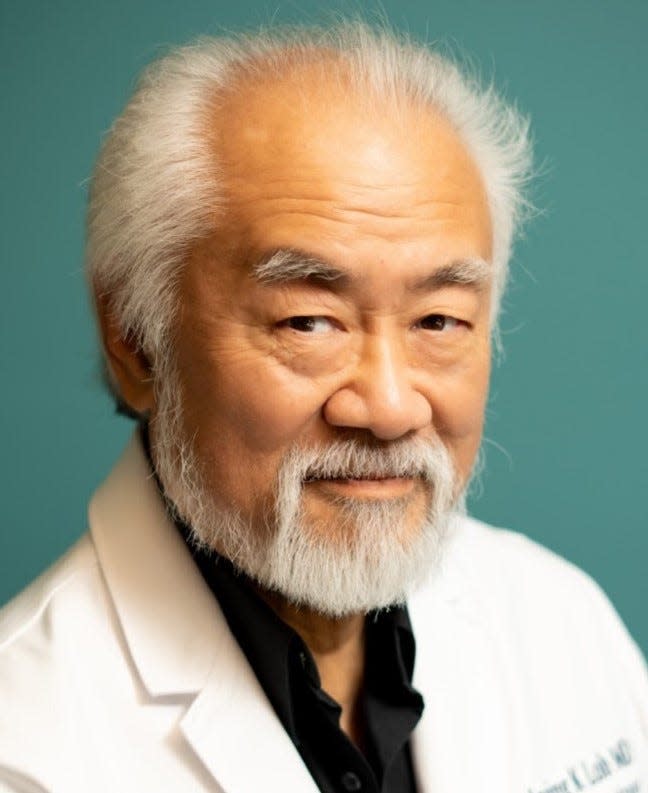Dr. Loh: Women have been underrepresented in clinical research
- Oops!Something went wrong.Please try again later.
In prior columns I’ve alluded to the inapplicability of clinical trial results to certain populations, often as a result of non-inclusion of those patient groups into the study cohort. Recognition of those disparities has resulted in active efforts by the US Food and Drug Administration to include those underrepresented populations into these projects so that the results actually reflect what can be expected in those patient groups.
There are many barriers to the inclusion of these patients on both sides of the equation, that is, from the research side based on cost and effort, and from the patient side based on ability and trust to allow participation. I am part of an academic proposal to bridge those obstacles, but that is a subject for a future column. For this column, I’d like to focus on a major effort to include about half of our population that has been underrepresented in clinical research and for which more information is absolutely required. Although those barriers have usually been based on racial or ethnic criteria, it turns out that being female has been a bias that has finally been recognized and is being addressed.
This month, the Biden administration announced an executive order proposing a $12 billion fund to improve our long-overdue understanding of women’s health and to strengthen women’s health research standards across federal agencies. In his remarks, President Biden called this first Initiative on Women’s Health Research the “most comprehensive executive actions ever taken to improve women’s health” and said it highlighted the administration’s efforts to enhance economic gains for women. “Our administration has turned around the economy because we focused on women. … If you want to have the strongest economy in the world, you can’t leave half the workforce behind.”
Within this order, the National Science Foundation and Department of Health and Human Services are instructed to research ways to use artificial intelligence (another one of my favorite topics) to advance women’s health research, including a national network of women’s research centers. There certainly are gaps in medical knowledge concerning how to diagnose, manage, and treat diseases that affect women more than men, and evaluate illnesses that affect women differently than men.
So this order will create a Fund for Women’s Heath Research at the National Institutes of Health (NIH). It also directs the HHS to expand data collection on women’s midlife health and launch an agenda that can guide investments toward menopause-related research in heart, brain, and bone health. Menopause, I suspect that’s a word that has never before seen the light of day in an executive order. Employers estimate that the U.S. economy loses $26.6 billion annually due to menopause-related symptoms and many have been promoting menopause benefits to mitigate those losses.
In addition, impactful conditions like endometriosis and fibroids, plus breast cancer, Alzheimer’s disease and autoimmune disorders disproportionately affect women. As a practicing cardiologist for over four decades, I can tell you that we became aware that women present with heart attacks differently that men only because it became apparent the we were taught “classical symptoms” generated by data acquired in studying men and not women.
New topics targeted for investigation will include wider range subjects including computational research, data standardization, engineering biomechanics, and environmental factors. Simplification of the arduous process of getting funding is also part of this initiative. Lest one think that this is yet another governmental bureaucracy, this initiative also calls on public (ARPA-H)-private (SBIR) engagement to meet these goals. I have known and worked with both of those entities and can tell you they are the best of the best when it comes to guiding meaningful projects to successful conclusions.
And since the overturning of Roe v. Wade in June 2022, the ability of women to make decisions about their own healthcare and bodily integrity has also been top of mind for many. This order reminds us all that women’s issues go far beyond abortion, but are also included under the umbrella of women’s health. It’s also about whether one thinks it’s OK for the government to tell you how to manage your family decisions, like whether you should have children, when you should have them, and how to educate them by constraining what they can learn.
Parents should be able to decide whether or not to even become parents, and once they are, be able to make educational decisions with their children. Beyond health and safety of children and the community at large, the government should support and not dictate to women.
To be fair, there is bipartisan support for this endeavor. To paraphrase Jack Harlow in Bloomberg, we must realize there are supporters of he-who-must-not-be-named who believe that women exist to bear children (Handmaid’s, as it were), make dinner (in Katie Britt’s kitchen, I suspect) while pouring a cocktail for the man of the house, do laundry while cleaning the house, and do women’s work (like raising the children) while the men do real work.
Let’s see if the men in the Congress try to cut this funding out of the 2025 federal budget. Some of these men endorsed by HWMNBN who are running for office are even suggesting that women should not be allowed to vote. None of these men have ever met my wife. And God help them if they ever do.

Irving Kent Loh, M.D., is a preventive cardiologist and the director of the Ventura Heart Institute in Thousand Oaks. Email him at drloh@venturaheart.com.
This article originally appeared on Ventura County Star: Dr. Loh: Women have been underrepresented in clinical research

